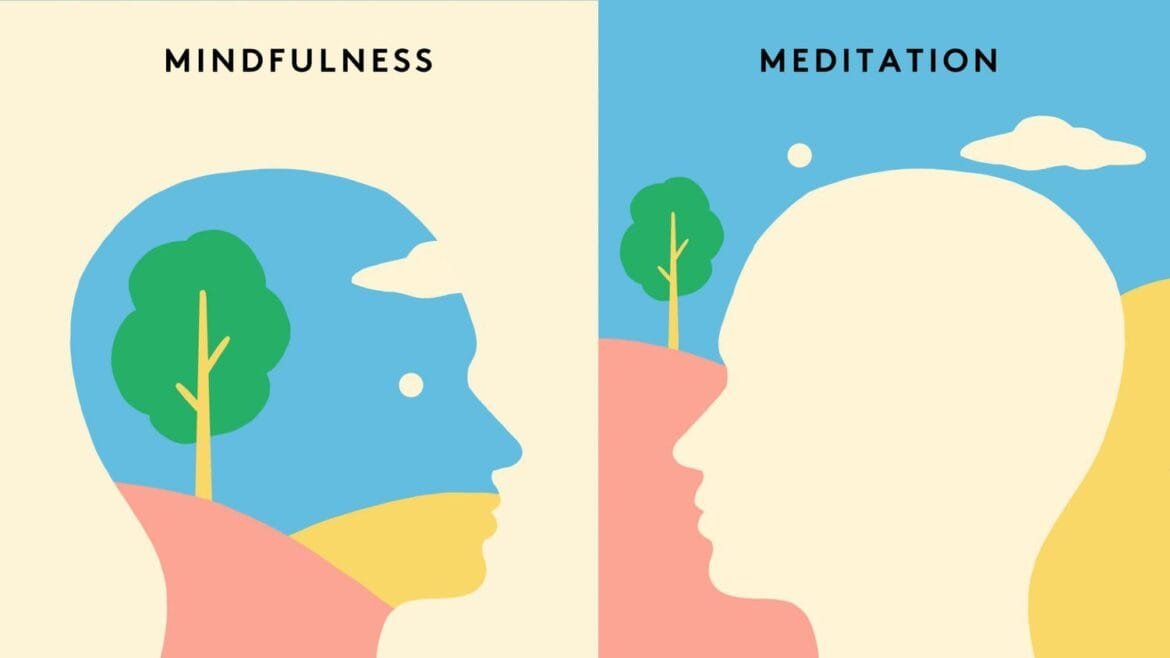Mindfulness and meditation are related. They are not the same, though. Mindfulness is being fully present in the moment. It can happen anywhere, like eating, walking, or listening to music. Meditation is a practice. It often involves sitting still and focusing on breathing or a thought. It helps train the mind. Meditation can lead to mindfulness, but you don’t need meditation to be mindful.
Do You Need an Instructor for Mindfulness and Meditation?
You don’t need a teacher to practice mindfulness and meditation. Many people learn it on their own. They focus on their breath, their senses, or the world around them. Some find an instructor helpful. A teacher can offer guidance and support. Others use apps, books, or classes. It depends on the person.
The Dangers of Over-Commercialization
Mindfulness and meditation are simple. Today, companies sell apps, courses, and products to make money. Some people think they need to buy these things. They do not. You do not need to pay for mindfulness and meditation. Being aware of the present moment costs nothing. Many old traditions teach it without special tools.
More on the dangers of over-commercialization: The Lure of the Wellness Industry
Modern Words for Mindfulness and Meditation
Some people don’t like the words mindfulness and meditation. There are other words that mean the same thing. These include awareness, presence, focus, and attention. Some call it being in the now. Others say it is tuning in. Whatever you call it, the meaning stays the same.
Philosophical and Spiritual Meanings of Mindfulness and Meditation
Many cultures have mindfulness and meditation traditions. In Buddhism, it is called sati. Taoists call it wu wei, which means effortless action. In Zen, zanshin describes relaxed awareness. Sufis use muraqaba for deep reflection. In Kabbalah, hitbonenut is mindful thought. These ideas come from different places but share a common goal: being fully aware.
How Mindfulness Became Secular
Mindfulness started in religious traditions. Today, people practice them without spiritual beliefs. Scientists study their benefits. Doctors use them for stress and mental health. Schools teach them to help kids focus. Businesses use them for better work. You don’t need to follow a religion to be mindful. It is just paying attention to the present moment.
Music as the Purest Form of Mindfulness

You’re driving in your car. One of your favorite songs starts playing on the radio. You turn up the volume and sing the lyrics. Your hands are tapping the beat on the steering wheel. This is mindfulness. You’re aware of every note and hopefully aware of ongoing traffic. It’s that simple. When the song is over, you take a deep breath, turn the volume back down and smile.
Music is a great way to practice mindfulness and meditation. It only exists in the moment. A note is played, then it is gone. You must be present to hear it. When you listen deeply, you feel connected. The mind stops wandering. Music’s structure guides attention. Some songs help you visualize scenes. Others create emotions. Every listen is different.
Some people listen with full focus. They sit still or look at nature. Others close their eyes and feel the sounds. Deep listening is like meditation. It brings awareness and peace. The world fades. Only the music remains. That is mindfulness at its best.
Mindfulness and meditation do not need rules. They do not need apps or courses. They are simple. You can practice them anywhere. Listen to the wind. Feel the sun on your skin. Focus on your breath. Or, let music take you on a journey. However you do it, mindfulness and meditation are always within reach.

